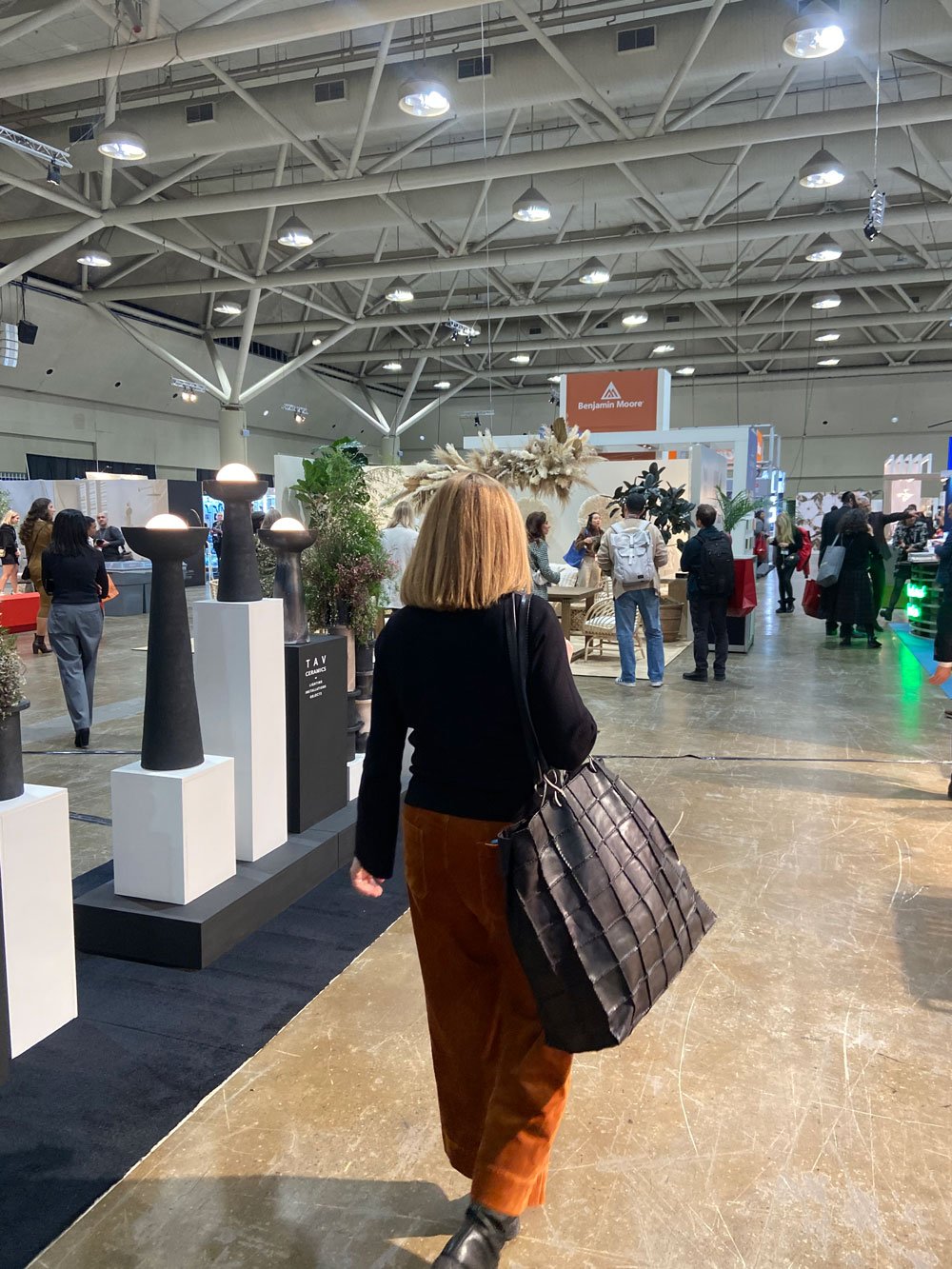Takeaways from the 2024 Interior Design Show in Toronto
I love to start off a new year with a jolt of creative inspiration, and that’s why I decided to check out the Interior Design Show in Toronto last week.
Initially, I was a bit skeptical, assuming that the event would be dominated by large manufacturers showcasing the usual, with little room for innovation. Surprisingly, I left feeling quite impressed by the number of small businesses sprinkled throughout the Convention Centre, showcasing their innovative, sustainable, and occasionally circular designs. For the first time in years, I left the show with a renewed sense of hope.
There were numerous takeaways regarding sustainable design and sustainability that are worth noting and sharing with the broader community. I hope that a piece of this information might give you pause to think before embarking on your next design project or making your next purchase. For me personally, there were three key takeaways, each serving as a gentle reminder of the work that needs to be done at the grassroots level, as well as within the design industry and the larger systems currently in place.
Eager to be there for the opening, I made sure to attend the first session on center stage about the circular economy and product design. This discussion set the tone for the rest of the day. The opening panel included Ranee Lee from Designwith and OCAD, Russell Greenberg, the Co-Founder and Creative Director of Stickbulb, along with two additional speakers. They effectively provided the audience with background knowledge about the circular economy and insights on integrating these principles into our design work.
They highlighted the concerning fact that only a small fraction of plastic is actually recycled. In Canada, this figure is a mere 9%, with the rest ending up in landfills. This is eye-opening, to say the least. Consider how much of our products are packaged in plastic. This emphasizes the importance of incorporating designs that utilize recycled products instead of those made from new materials, including plastics, metals, wood, and even textiles. A fundamental aspect of the circular economy is keeping products in the economic loop, either as new products or reused as they are.
Designing with the end in mind is crucial in our industry, and this emerged as another key takeaway. How long will the product last in your home? What if it breaks down? Can its components be disassembled and recycled? A prime example in lighting design is the use of LED integrated lights. Once these fixtures stop working, the entire unit becomes useless and ends up in a landfill since there are no bulbs to replace.
On a personal note, I’ve experienced this firsthand. I purchased three LED integrated sconces for my kids' bathroom during a renovation eight years ago. Since then, one has stopped working. The model is no longer produced, so I can’t replace it. To combat this waste, I’ve chosen to leave the two functioning sconces to light the bathroom and avoid buying new ones. My hope is that when they all fail, there will be a way to recycle them, and then I can replace all three. This is something to keep in mind when purchasing lighting for personal use.
Embrace the imperfect, the final takeaway that resonates deeply with me. I met with artist Noell Hamlyn while she was adding final touches to her exhibit at the IDS, which complemented her larger exhibition at the ROM titled "Lifers." Although her exhibit focused on fashion's environmental impact, we discussed its overlap with interior design. Instead of striving for unattainable perfection, consider embracing the imperfections in a space or a piece of decor. Often, in our pursuit of perfection, we overlook not only the environmental impact of our choices but also the beauty and stories inherent in them - like the cracks in the walls, changes in trim style in an old house, or marks on your cushions. Before attempting a complete overhaul, fix, reimagine, and appreciate the beauty that already exists, keeping the stories alive and reducing our environmental footprint.
The 2024 Interior Design Show was not just a showcase of trends and innovations; it was a source of invaluable lessons and insights into sustainable and circular design. These takeaways are more than just design principles; they’re calls to action for all of us in the design community and beyond. By embracing these ideas, we can make conscious choices that contribute to a more sustainable future, both in our professional projects and in our everyday lives. Let's carry this inspiration forward, transforming our spaces in ways that respect and harmonize with our environment.



